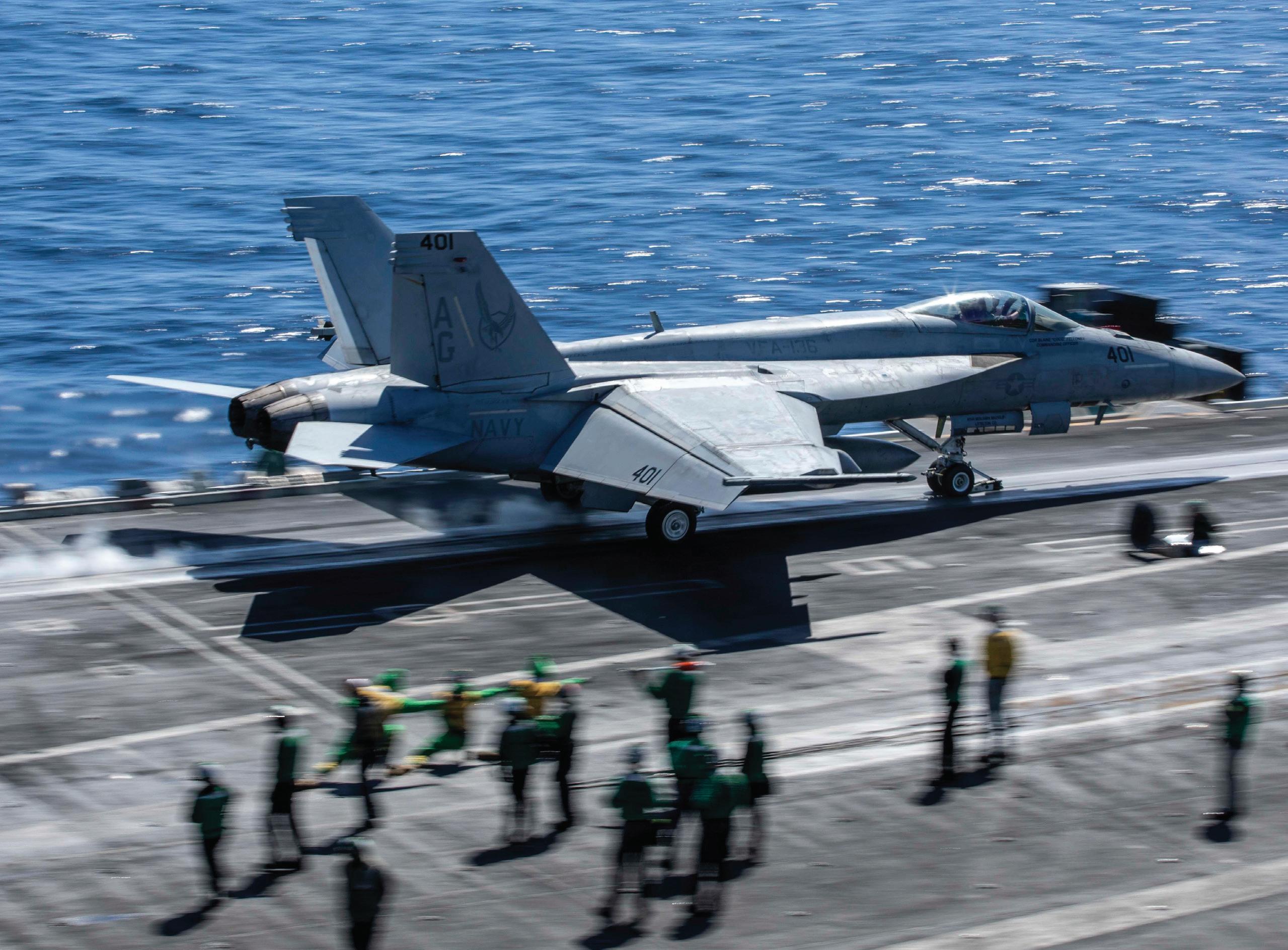
3 minute read
The CRM Test
By Lt. Phillip A. Exner, HSC-25
They are the golden principles, the sacred rules, and tirelessly memorized by pilots regardless of platform: Crew Resource Management (CRM) skills. At the beginning of flight school, CRM is so stressed that it becomes a subconscious thought with young aviators. The instructors try to instill those skills’ importance, but we often fail to understand their true value until we see them in our own mistakes. Departing the amphibious assault ship USS America (LHA 6), I’ve learned some hard lessons and identified a CRM skill that, had I used, may have prevented a potentially lifethreatening situation for my crew and those aboard the ship.
My story begins with something no helicopter aircraft commander (HAC) scenario prepares you for: a beautiful, sunny day. It was clear in a million as some would say. The flight deck was empty. As an H2P, this is the perfect time to do bounces and gain proficiency. Although not new to the America, my HAC was newly qualified as the aircraft commander.
We decide to take turns for each landing. With each pass we make, I notice that my HAC slowly increases how much he wraps up his turn. One after another, we take landings just as we planned. With each pass we make, my HAC is faster and harder on his turns until his turns are extremely tight. Our turns get so aggressive that our airspeed is not really burning off on final and we have to bring our nose up so much that we can barely see the Landing Signal Enlisted (LSE) Sailor. Being fast on final can cause you to lose sight of the LSE, which is an instant wave-off criterion. This is pre-briefed as a safety issue before every flight. It’s one thing to wrap up your turn, but it’s another to be unsafe and dangerous for no reason. Before I could say something, the aircrewmen in the back said, “That one was a little fast, don’t you think?” The HAC just kind of laughed. It’s his turn again and I know I’m going to have to wave him off if it’s anything like the last one.
We transition, clear from the deck, report “ops normal,” and turn hard for the downwind. I’m hawking the airspeed when I notice that we’re faster than before. At this point, I’m frustrated and even a little mad. I am mad that he’s putting me in this position and frustrated with myself for not calling him out earlier and letting it get this far. I want to call wave-off. It’s right on the tip of my tongue. Instead, I’m saved, and not from my utility aircrewman. Tower calls, “Knight Rider 11 wave off.” After the wave off, tower has us come back around and land. Once safely on deck, tower asks us to widen the pattern and slow it down. A sigh of relief for me, or was it? I could feel a knot in my stomach because I didn’t have the assertiveness to call it myself.
Out of all the CRM skills, I drop assertiveness? How? I stewed about the event for the rest of the flight. Beating myself up and asking myself, “Why didn’t anyone else call it?” Was I just uncomfortable with this? I’ve always been able to convey safety procedures to anyone. Maybe it’s because I work with him and don’t want to create a poor working relationship? After the flight was conducted, I asked everyone to meet in the briefing space. We discussed the events and actions. It was clear at the time that everyone was very uncomfortable with the landings and yet no one in the crew said anything. I realized that everyone accepted what was happening and hoped someone else would say something.
The crew pointed out the obvious mistakes with the pattern, airspeed and the potentially dangerous situation of losing sight of the LSE. The HAC seemed to understand the crew’s concerns. I think he realized how unsafe the flight had gotten. He would later add talking points to his future briefs about such scenarios, and I liked that he added this. It makes the crew more likely to speak up in uncomfortable situations and sets clear boundaries for the entire crew. It creates left and right lateral limits on what’s acceptable and what’s not acceptable. I intend to use these points as well for my future briefs.
This experience was all but 25 minutes and I can remember every second of it. It makes me think about many “what ifs” and “what abouts.” What about the next flight? What would it have been like at night? I think we must keep each other safe by acknowledging these scenarios. Addressing the scenario affected the next flight with clear boundaries established and also made me a better pilot for doing so. The last thing I’ll leave you with is this: What would have happened if the tower didn’t call wave-off? Would you have called it?










